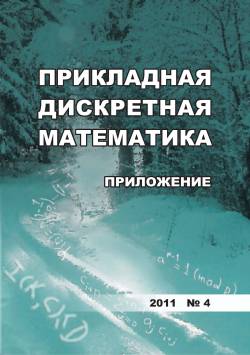On the generic complexity of discrete logarithm problem in groups of elliptic curves over finite fields
Generic-case approach to algorithmic problems was introduced by Miasnikov, Kapovich, Schupp and Shpilrain in 2003. This approach studies behavior of an algorithm on typical (almost all) inputs and ignores the rest of inputs. Many classical undecidable or hard algorithmic problems become feasible in the generic case. But there are generically hard problems. In this paper, we consider generic complexity of the discrete logarithm problem in elliptic curves over finite fields GF(p) with prime p. We fit this problem in the frameworks of generic complexity and prove that its natural subproblem is generically hard provided that the discrete logarithm problem is hard in the worst case.
Keywords
генерическая сложность, дискретный логарифм, эллиптическая кривая, generic complexity, discrete logarithm problem, elliptic curvesAuthors
| Name | Organization | |
| Rybalov A.N. | Dostoevsky Omsk State University | alexander.rybalov@gmail.com |
References
